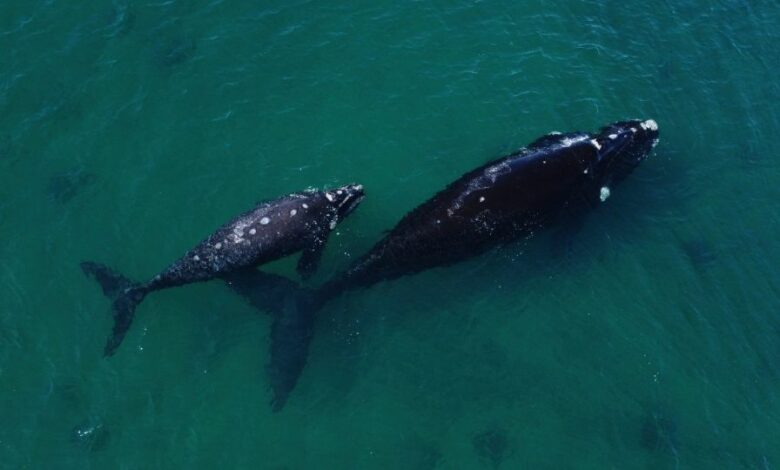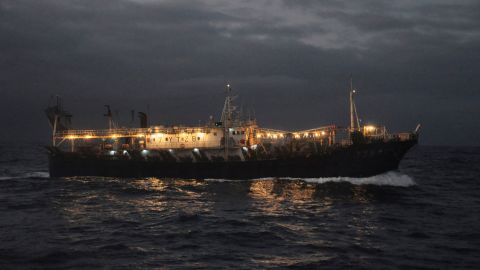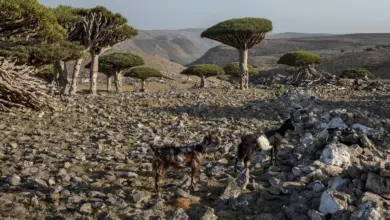
Nearly 200 countries have agreed to a legally-binding treaty to protect marine life in international waters, which cover around half of the planet’s surface, but have long been essentially lawless.
The agreement was signed on Saturday evening after two weeks of negotiations at the United Nations headquarters in New York ended in a mammoth final session of more than 36 hours – but it has been two decades in the making.
The treaty provides legal tools to establish and manage marine protected areas – sanctuaries to protect the ocean’s biodiversity. It also covers environmental assessments to evaluate the potential damage of commercial activities, such as deep sea mining, before they start and a pledge by signatories to share ocean resources.
“This is a historic day for conservation and a sign that in a divided world, protecting nature and people can triumph over geopolitics,” Laura Meller, Oceans Campaigner at Greenpeace Nordic, said in a statement.
The high seas are sometimes called the world’s last true wilderness. This huge stretch of water – everything that lies 200 nautical miles beyond countries’ territorial waters – makes up more than 60% of the world’s oceans by surface area.
These waters provide the habitat for a wealth of unique species and ecosystems, support global fisheries on which billions of people rely and are a crucial buffer against the climate crisis – the ocean has absorbed more than 90% of the world’s excess heat over the last decades.
Yet they are also highly vulnerable. Climate change is causing ocean temperatures to rise and increasingly acidic waters threaten marine life.
Human activity on the ocean is adding pressure, including industrial fishing, shipping, the nascent deep sea mining industry and the race to harness the ocean’s “genetic resources” – material from marine plants and animals for use in industries such as pharmaceuticals.

“Currently, there are no comprehensive regulations for the protections of marine life in this area,” Liz Karan, oceans project director at the Pew Charitable Trusts, told CNN.
Rules that do exist are piecemeal, fragmented and weakly enforced, meaning activities on the high seas are often unregulated and insufficiently monitored leaving them vulnerable to exploitation.
Only 1.2% of international waters are protected, and only 0.8% are identified as “highly protected.”
“There are huge unmanaged gaps of habitat between the puzzle pieces. It is truly that bad out there,” Douglas McCauley, professor of ocean science at the University of California Santa Barbara, told CNN.
The new oceans treaty aims to fill those gaps by providing the legal force to create and manage marine protected areas in international waters. Experts say this will be vital for meeting global biodiversity pledges nations made at COP15, the UN Biodiversity Conference in Montreal in December.
A successful treaty “will help us achieve the goal of conserving or protecting at least 30% of the global ocean by 2030,” Monica Medina, the US Assistant Secretary of State for Oceans and International Environmental and Scientific Affairs, told CNN by email.

The agreement of the oceans treaty marks a process that started around two decades ago.
Back in 2004, the UN set up an ad hoc group to discuss ocean protection. It wasn’t until 2015, that the organization adopted a resolution to develop a binding oceans treaty and, after years of preparatory talks, negotiations began in earnest in 2018.
“It has been a long arc from the first time the question was raised, to where we are now,” Karan said.
Many had hoped that 2022 would be the breakthrough, but talks in August – the second round that year – ended in failure.
These latest negotiations were billed as a final chance for the world’s oceans.
There were points during the negotiations where some worried that agreement would never happen, as conflicts threatened to derail talks. “It’s been a bit of a roller coaster ride,” said Karan.
Major sticking points included nailing down the processes for creating marine protected areas and ensuring costs and benefits were shared equitably – especially as many developing countries may not have the technology or capacity to do their own scientific exploration of the high seas.
But after a grueling final session, the talks ended late Saturday night with an agreement.
“We praise countries for seeking compromises, putting aside differences and delivering a treaty that will let us protect the oceans, build our resilience to climate change and safeguard the lives and livelihoods of billions of people,” Greenpeace’s Meller said.
Countries now have to formally adopt and ratify the treaty. Then the work will start to implement the marine sanctuaries and to attempt to meet the target of protecting 30% of global oceans by 2030. “We have half a decade left, and we can’t be complacent,” Meller said.
“If we want the high seas to be healthy for the next century we have to modernize this system – now. And this is our one, and potentially only, chance to do that. And time is urgent. Climate change is about to rain down hellfire on our ocean,” McCauley said.




